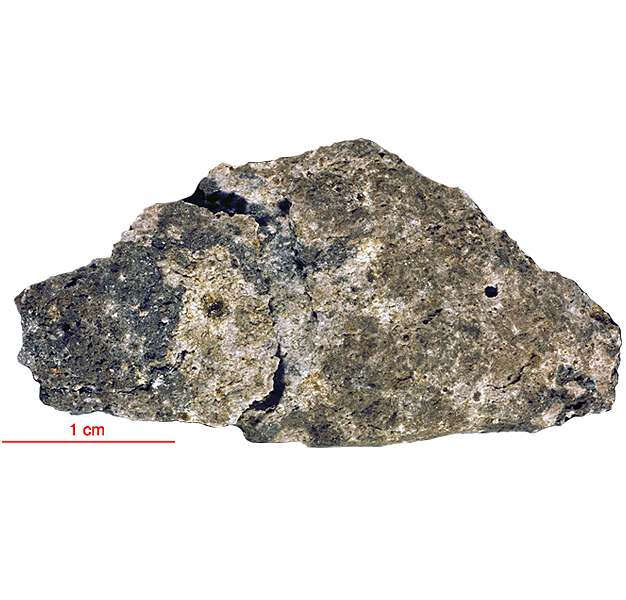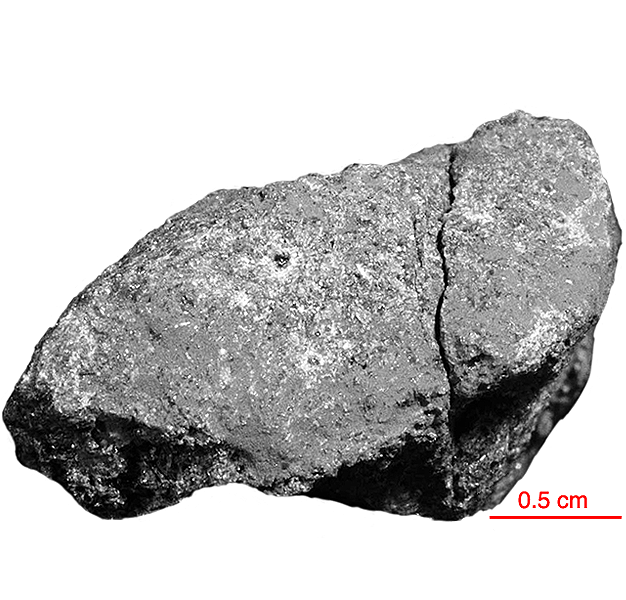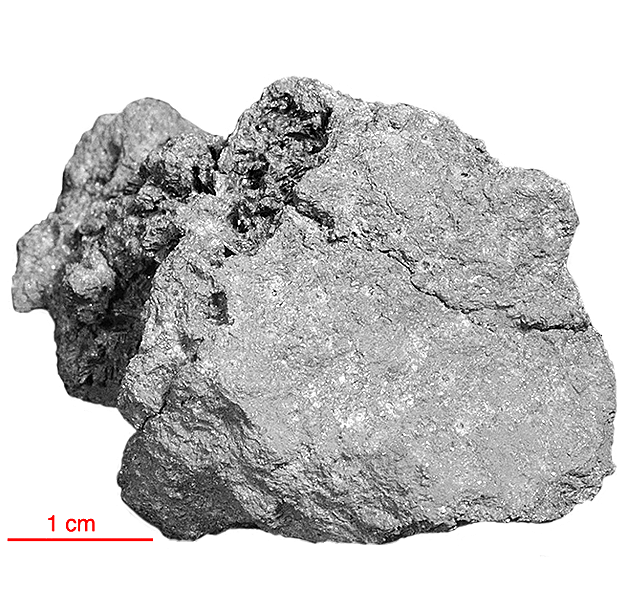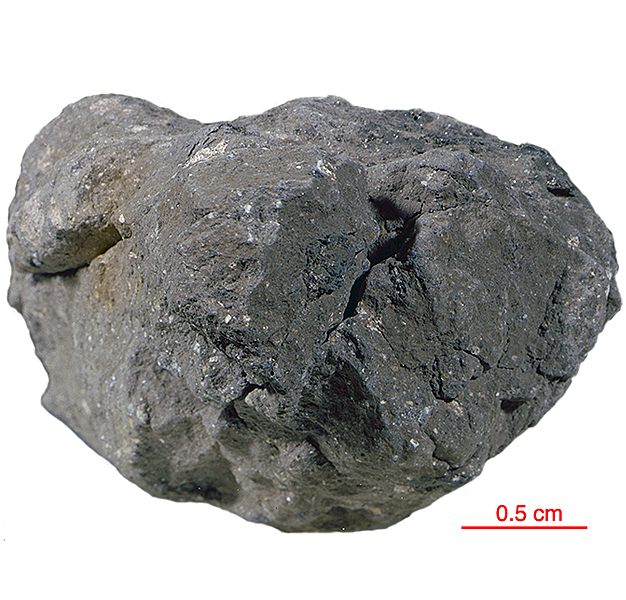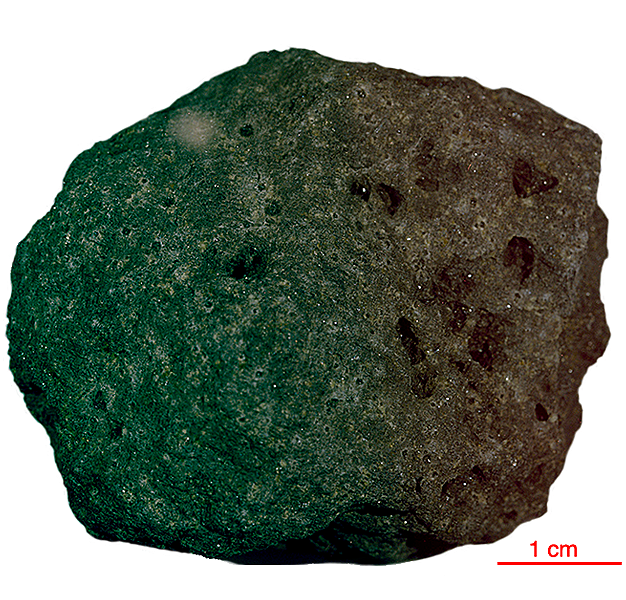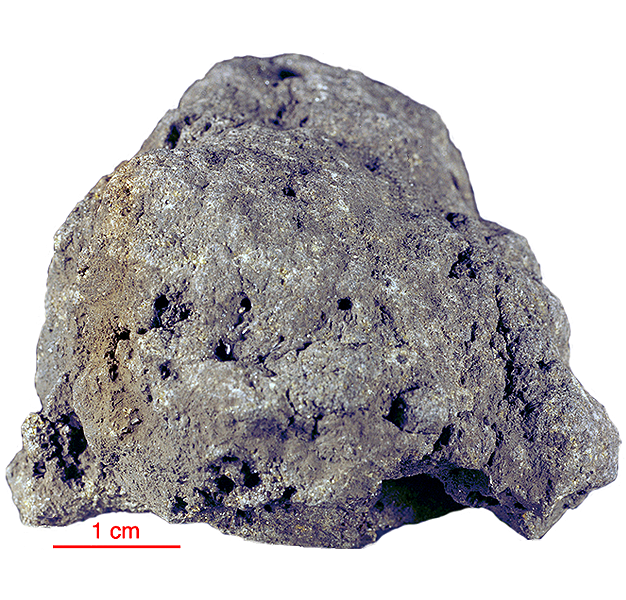
Fact sheet
12075 is a vuggy, medium-grained olivine basalt with olivine and pyroxene phenocrysts set in a variolitic groundmass. It had also been described as an olivine dolerite cumulate. This is a medium-grained basic igneous rock in which pyroxenes (about 20%) and olivine (20%) phenocrysts (lengths ~3 mm) are embedded in a matrix of finer-grained, irregular intergrowths of pyroxene, plagioclase laths (20-50 microns in width and mostly untwinned) and elongated lamellae of ilmenite. Olivine crystals tend to occur in aggregates. Some olivine contains melt inclusions. Unusual sprays of large pyroxene grains radiating from a common point are also present.
The sample weighed 232.5 grams before analysis. It has not been dated.
Sadly, the mounting resin of this thin section has deteriorated over time and now contains clusters of feathery crystallites both around the thin section and within vesicle space (where they have an appearance not unlike some zeolite species).
Further details of this and other Apollo samples are here: http://curator.jsc.nasa.gov/lunar/
Apollo 12 returned 34 kilograms of samples, including 45 rocks, samples of lunar 'soil', and several core tubes that included material from as much as 40 centimetres below the lunar surface.
Apollo 12 rocks were almost all basalts, with only two breccias in the returned samples. The basalts at the Apollo 12 site formed 3.1 to 3.3 billion years ago, roughly 500 million years later than the Apollo 11 basalts. Overall, there is much less of the element titanium in the Apollo 12 samples than in the Apollo 11 samples, which explains the more reddish colour of this region. The differences in age and chemical composition between the Apollo 11 and Apollo 12 samples demonstrate that mare volcanism did not occur as a single, Moon-wide melting event.
Apollo 12 was launched on 14 November 1969.

